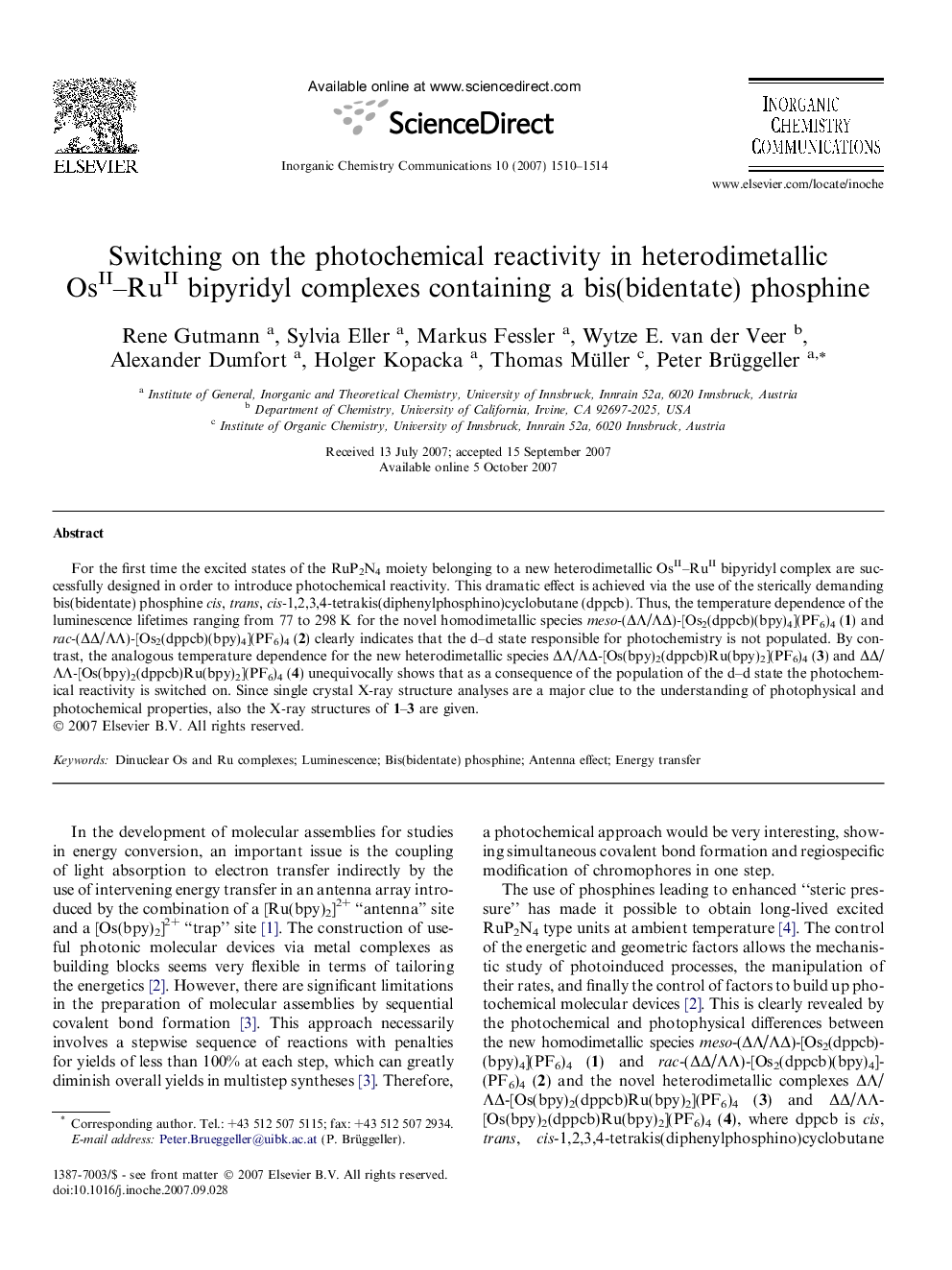| کد مقاله | کد نشریه | سال انتشار | مقاله انگلیسی | نسخه تمام متن |
|---|---|---|---|---|
| 1304948 | 1498976 | 2007 | 5 صفحه PDF | دانلود رایگان |

For the first time the excited states of the RuP2N4 moiety belonging to a new heterodimetallic OsII–RuII bipyridyl complex are successfully designed in order to introduce photochemical reactivity. This dramatic effect is achieved via the use of the sterically demanding bis(bidentate) phosphine cis, trans, cis-1,2,3,4-tetrakis(diphenylphosphino)cyclobutane (dppcb). Thus, the temperature dependence of the luminescence lifetimes ranging from 77 to 298 K for the novel homodimetallic species meso-(ΔΛ/ΛΔ)-[Os2(dppcb)(bpy)4](PF6)4 (1) and rac-(ΔΔ/ΛΛ)-[Os2(dppcb)(bpy)4](PF6)4 (2) clearly indicates that the d–d state responsible for photochemistry is not populated. By contrast, the analogous temperature dependence for the new heterodimetallic species ΔΛ/ΛΔ-[Os(bpy)2(dppcb)Ru(bpy)2](PF6)4 (3) and ΔΔ/ΛΛ-[Os(bpy)2(dppcb)Ru(bpy)2](PF6)4 (4) unequivocally shows that as a consequence of the population of the d–d state the photochemical reactivity is switched on. Since single crystal X-ray structure analyses are a major clue to the understanding of photophysical and photochemical properties, also the X-ray structures of 1–3 are given.
The combination of the bis(bidentate) phosphine cis,trans,cis-1,2,3,4-tetrakis(diphenylphosphino)cyclobutane (dppcb) with the chromophores [M(bpy)2]2+ (M = RuII, OsII) leads to the novel homo- or heterodimetallic species meso-(ΔΛ/ΛΔ)-[Os2(dppcb)(bpy)4](PF6)4 (1), rac-(ΔΔ/ΛΛ)-[Os2(dppcb)(bpy)4](PF6)4 (2),ΔΛ/ΛΔ-[Os(bpy)2(dppcb)Ru(bpy)2](PF6)4 (3), and ΔΔ/ΛΛ-[Os(bpy)2(dppcb)Ru(bpy)2](PF6)4 (4). The presence of “steric pressure”in these compounds switches on the photochemical reactivity in 3 and 4. The X-ray structures of 1–3 explain this effect.Figure optionsDownload as PowerPoint slide
Journal: Inorganic Chemistry Communications - Volume 10, Issue 12, December 2007, Pages 1510–1514